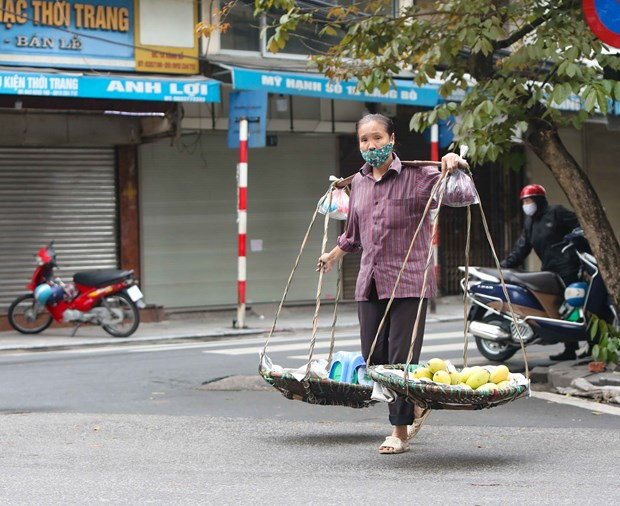 The second quarter of 2020 also saw the highest unemployment rate in the last 10 years, at 2.73 percent. (Illustrative photo: VietnamPlus)
The second quarter of 2020 also saw the highest unemployment rate in the last 10 years, at 2.73 percent. (Illustrative photo: VietnamPlus) Hanoi (VNA) – It’s time for the Government, workers and employers to unite as more than 30 million workers were adversely affected by COVID-19 by end of the second quarter.
Dr Chang-Hee Lee, Director of the International Labour Organisation (ILO) in Vietnam, has called for concerted efforts among the Government, workers’ and employers’ organisations to save jobs and protect vulnerable workers as the COVID-19 pandemic is taking its toll on the country’s labour force.
More than 30.8 million persons affected by COVID-19
According to the latest quarterly Labour Force Survey released on July 10, 30.8 million persons aged 15 and over were adversely affected by the COVID-19 pandemic by end of June 2020, including those who lost their jobs, had their working hours cut or income reduced among others.
The survey, carried out by the General Statistics Office (GSO) with ILO technical support, showed a record low level of the labour force. It shrank by 2.2 million persons compared to the previous quarter and by 2.4 million persons compared to the same period last year. The reduction in participation in the labour force was bigger in rural areas and the female workforce.
“The labour market in the second quarter of 2020 suffered from a mix of elements,” said Valentina Barcucci, ILO Vietnam’s Labour Economist.
The preventive social distancing period at the beginning of the quarter brought the virus under control quickly, with limited impact on the domestic market compared to what other countries have experienced.
“However, impacts are unavoidable due to the scale of the necessary measures adopted. On the other hand, lockdowns in other countries and border closures in the last quarter have had a strong blow on Vietnam’s economy and jobs,” she added. The pandemic has reduced economic activity in some sectors, such as service, industry and construction, to unprecedented levels.
“As a result, we observe workers who have lost their jobs but are not looking for new jobs, probably because there are not many opportunities around,” Barcucci analysed.
This year is the first time when workers’ income in the second quarter has recorded a year-on-year decrease in the last 5 years. The average monthly income of workers in this period was 5.2 million (about 223 USD), down by 5.1 percent against the previous year.
“And the most vulnerable on the labour market are bearing the brunt of the economic impact of the pandemic,” said Barcucci.
Informal workers suffered a worse credit crunch than formal workers. Their monthly income dropped by 8.4 percent and 4.7 percent year on year respectively. The higher qualification the workers hold, the lower their income reduced.
 Informal workers suffer from a worse credit crunch than formal workers (Illustrative photo: VietnamPlus)
Informal workers suffer from a worse credit crunch than formal workers (Illustrative photo: VietnamPlus)
Vietnam is well positioned
The second quarter of 2020 also saw the highest unemployment rate in the last 10 years, at 2.73 percent. The biggest increase was found among low-skilled workers.
However, the ILO Vietnam Director believed that Vietnam is better positioned than most other countries in overcoming the economic and labour market challenges as it did with the public health crisis.
Stimulating the economy and jobs; supporting enterprises, employment and incomes; protecting workers in the workplace; and using social dialogue between government, workers and employers to find solutions are what Vietnam would need to persistently continue, he said.
“It’s time for the Government, employers and workers to unite together to develop and implement evidence-based policies and measures to help the country come out of this crisis even in a better shape than when it started,” he added. “And the ILO stands ready to provide our support.”
At the global level, ILO’s latest monitor estimated that there was a 14 percent drop in working hours around the world during the second quarter of 2020, equivalent to the loss of 400 million full-time jobs (based on a 48-hour working week)./.
































